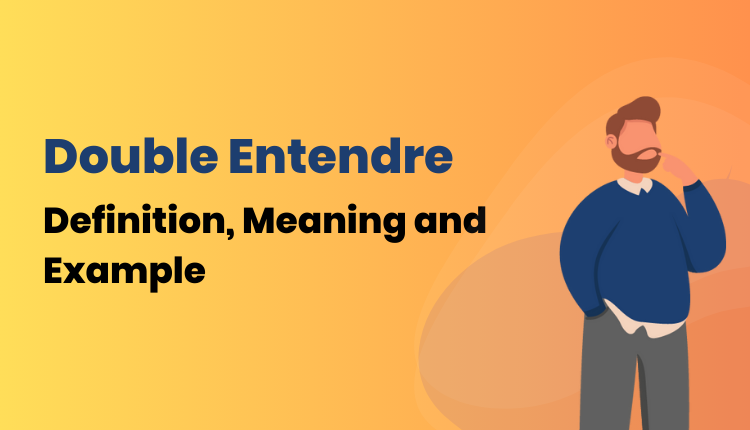Introduction
Language is a fascinating playground, full of twists that can surprise even seasoned speakers. One clever trick is the double entendre—a phrase with dual meanings. Common in humor, literature, and conversation, it adds depth and wit, often entertaining or sparking thought. If you’ve ever laughed at a line with more than one meaning, you’ve encountered this clever device. Let’s explore what makes double entendres so captivating, with some great examples along the way.
What Is a Double Entendre?
A double entendre is a figure of speech that communicates two meanings, usually one of them risqué or humorous. The witty use of words creates multi-layered interpretations, and as such, makes language more fascinating and exciting.
Authors and orators employ double entendres to produce humor or wit in their dialogue. They can bring laughter or stimulate thought, as the situation demands. This figure of speech flourishes in literature, movies, and conversation.
How Double Entendres Work?
Double entendres depend on wordplay ambiguity, in that a sentence has two meanings: one innocent and the other risqué or suggestive. Such dual meaning brings about humor, irony, or tension between texts or conversations.
Context is important to deciphering double entendres. The audience needs to catch cues such as tone, setting, and delivery in order to appreciate the multiple meanings. When they are well-used, they heighten communication by providing depth and humor and challenging listeners to listen more carefully.
Examples of Double Entendres
Double entendres put a humorous spin on language and are commonly applied in literature and comedy. One of the most famous is in Shakespeare’s “Romeo and Juliet,” when Mercutio says, “Ask for me tomorrow, and you shall find me a grave man.” In this statement, the adjective “grave” refers to seriousness as well as death.
In popular culture, music often uses double entendres. For example, Katy Perry’s “I Kissed a Girl” can be taken as either an exploration of sexuality or innocent curiosity. These layers create richer meanings that engage audiences on multiple levels.
Improving Clarity: How Trinka Grammar Checker Helps
Trinka Grammar Checker is an effective tool in making writing clear. With real-time grammar and style recommendations, your sentences will express the meaning without any confusion. This is especially helpful when using phrases such as double entendres.
Through context and tone analysis, Trinka assists you in improving your language selection. It enables writers to steer clear of misunderstandings without compromising creativity. With its easy-to-use interface, you can integrate it into any writing workflow, thereby making it a must-have for both professional and casual writers.
Conclusion
Double entendres infuse language with a playful quality, enabling witty wordplay that might entertain or stir one’s mind. Double entendres are an indication of the depth of communication and artistry.
In literature, movies, or just normal conversation, such phrases increase involvement. Through comprehend and enjoying double entendre examples, we appreciate language subtleties and hone our own communication.
Frequently Asked Questions
One of the best examples of a double entendre is the use of, “That’s what she said.” This line can be a simple statement yet carry a suggestive or inappropriate meaning. It is dependent on context and intonation for its comedic value. Another well-known example is from Shakespeare. In “Romeo and Juliet,” Mercutio utters, “Ask for me tomorrow, and you shall find me a grave man.” Here, he double-meaningly uses the word “grave,” suggesting seriousness but also hinting his own death.
Double entendre is a literary device in which a phrase has two meanings. One meaning is often literal, and the other meaning is often suggestive or playful. This insightful use of language provides levels of meaning. Authors and public speakers often use double entendres to create humor or to describe complicated concepts in a subtle way. They may enrich dialogue in books, movies, and conversational speech, making the exchange more interesting and stimulating for listeners.
A typical instance of a double entendre used in literature occurs in Shakespeare’s “Romeo and Juliet.” As Mercutio utters, “Ask for me tomorrow, and you shall find me a grave man,” he uses wordplay on the word “grave.” It means his serious nature as he prepares to die on one hand. On the other hand, it subconsciously refers to his death itself. This clever use of language adds depth to the dialogue while highlighting themes of love and mortality. Double entendres enrich writing by adding layers of meaning. They engage readers by inviting them to explore multiple interpretations. Whether used for humor or poignancy, these phrases have stood the test of time across various forms of literature. Understanding their function can deepen your appreciation for literary works where wordplay is key.

